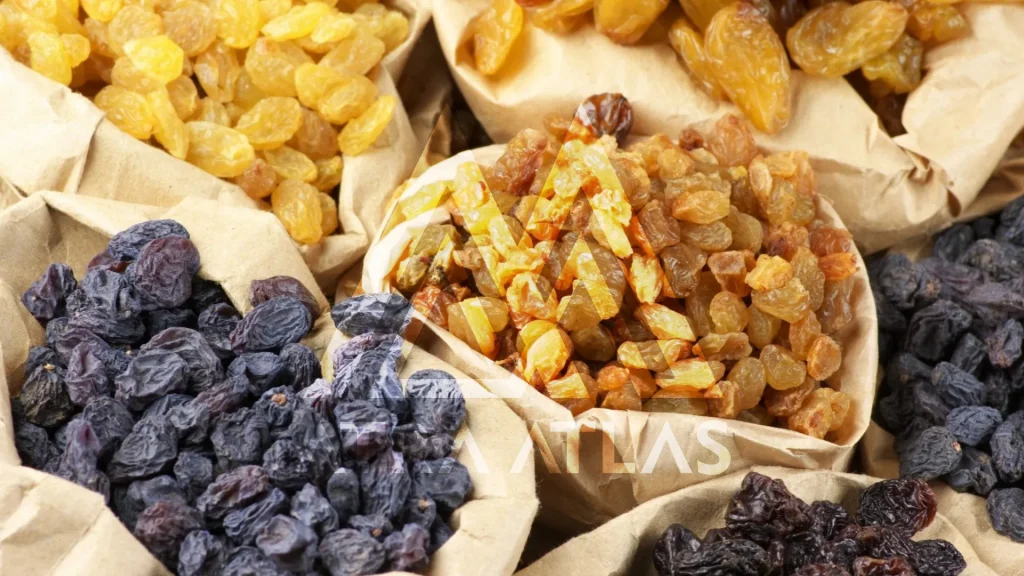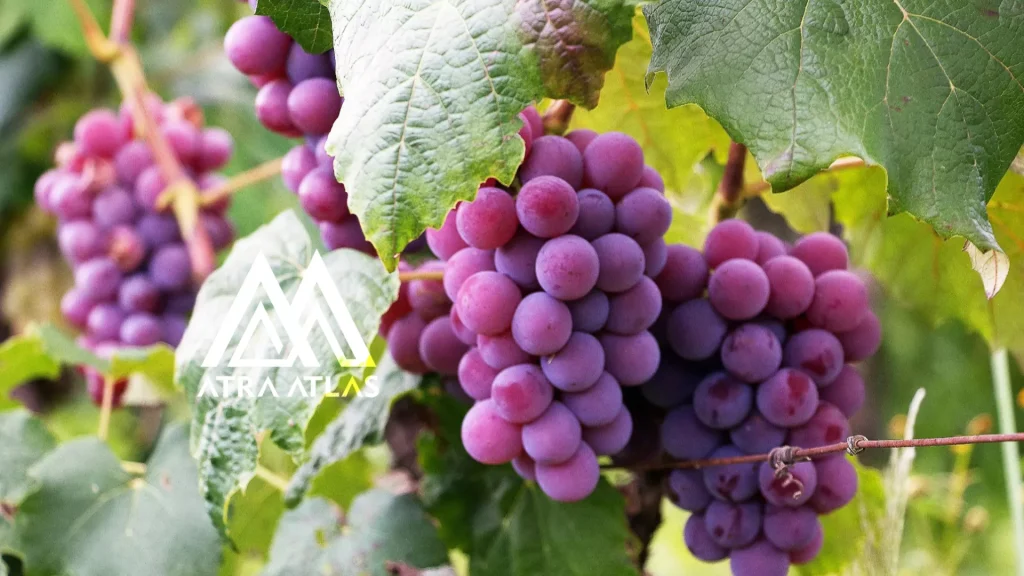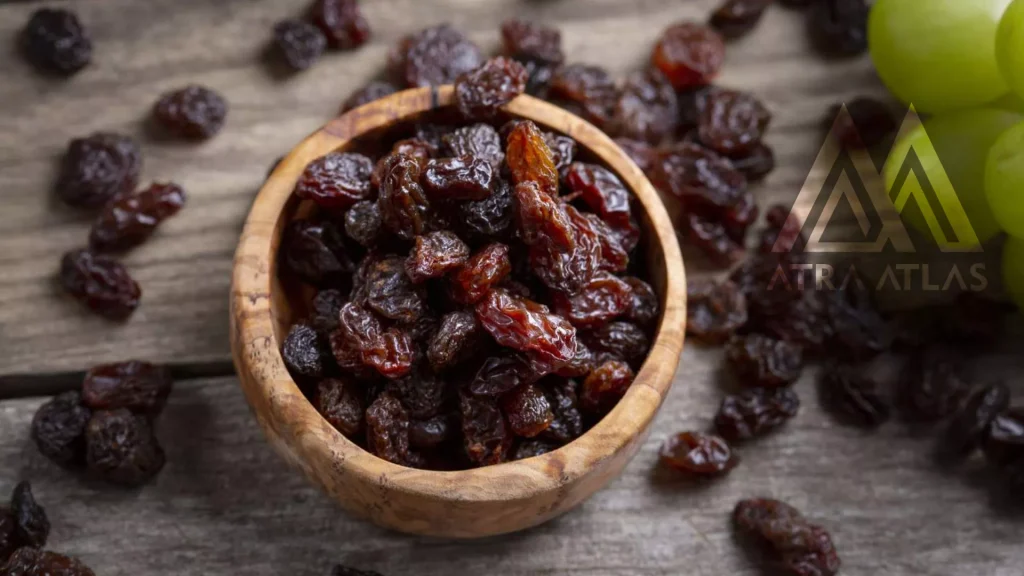
Import of Iranian Raisins
Iran holds the third place after Turkey and the United States in the export of raisins (exports of Iranian raisins include piloui raisins, sunny raisins, sour raisins, Malair raisins, and vineyard raisins).
Raisins are one of the dried fruits obtained from grapes. This dried fruit is rich in iron, calcium, potassium, antioxidants, and vitamins. It comes in different species and is available in various forms in the market.
In some regions of Iran, the quality of this lovely dried fruit is so high that it is exported to modern countries.
Iran's Position in the Production and export of Raisins and Grapes
This market has had an average situation until today, but predictions about its future are very positive. Many experts believe that by 2024 (the next two years), the global market for grape production and export will have a value of about $254 million.
Iranian raisins have many and varied types and can be a good business for individual income generation and a suitable source for branding and money making for the country (the export profit of this potential product is high).
However, some problems threaten it. What are the export problems from Iran?
Key issues in Iranian raisin export include:
High production costs: Rising costs of production can affect pricing and competitiveness.
Smuggling: Due to high prices and the food crisis, smuggling has become a concern.
Uncompetitive prices: Iranian raisin prices are often higher compared to other countries like Turkey.
Climate conditions: Adverse weather can impact grape harvests and subsequent raisin production.
Regulatory and logistical challenges: Complex regulations and inefficient logistics can hinder the export process.
Do you know the types of export raisins that are produced and exported in Iran?
Raisins have been called one of the most popular dried fruit products in the world because they can cure many diseases, such as lowering blood pressure, helping to treat anemia, protecting bones, preventing cancer, providing needed vitamins, improving blood vessel function, and helping deal with stomach problems.
These are just a few of the countless benefits of this product, which has made raisins always have many fans around the world. Iran’s sour raisin always has many fans among countries. Iran’s sour raisin is mostly exported to Turkey and Russia.
All kinds of Raisins
Raisins are generally divided into five categories: green pen, yellow (smoky), tifi, sunny, and currant raisins.
Not all these raisins are necessarily exported. It should also be clear whether the seller bought the raisins at a wholesale price or adjusted their profit based on supply and demand. The quality (grading) of the product, the amount of pesticides and impurities in cultivation, etc., all affect the final price.
Another very important factor is the evaluation of the target country’s market. For example, in some countries, the price of raisins may be low due to the large area of vineyards. Such a country will not buy Iran’s export raisins at a high price. The price of each kilogram of exported raisins usually ranges from half a dollar to three and a half dollars (in bulk form).
Ghalami Green Raisin
Those who want to turn grapes into green raisins use a cold emulsion. The emulsion is a combination of predetermined percentages of potassium carbonate and raisin oil (Australian oil).
The prepared solution is mixed together, and the grapes are dipped in the solution after separation. Depending on the type of grapes, they should remain in the solution for 20 to 30 seconds. After removing the grapes, they are hung on wire containers to dry. Exported green raisins are produced in this way.
Tiffy Raisins
Tiffy raisins are a variety of grapes that are converted into raisins by acid. The grapes are first dipped in acid and special solutions and then dried on special straps.
Yellow Raisins (smoked)
For yellow or smoked raisins, the process is the same as for peni raisins, with the difference that sulfur gas is used to smoke them.
The grapes are placed in a tray and exposed to sulfur gas. The grapes are gradually smoked by the sulfur and its smoke, along with air flow inside. Yellow or smoked raisins are among Iran’s exports of raisins.
Sunny Raisin
The process of making sunny raisins is similar to that of tifi raisins, but with the difference that Pikani and official varieties are used for their preparation. After harvesting the mung beans, the grapes are immersed in water, and then exposed to direct sunlight.
Sunny Raisin is one of Iran’s export raisins and has many applicants both inside the country and in neighboring countries.
Raisins
Currant is another type of raisin with many medicinal properties. Preparing currants is simple: grapes are picked and dried in special baskets. After some time, the raisins obtained from the grapes are ready for use.
This product is made from tiny grapes and is valued for its unique characteristics. Currants grow in dry soils and hot weather, and due to their significant consumption in various food industries, the production of currants is mainly intended for such uses. The export of currants to different countries is highly profitable and plays an important role in earning foreign exchange for the country.
Raisin is one of the products recognized as a symbol of Iranian diversity in the world market due to its special features and high quality. This agricultural product is significantly produced in Khuzestan province and Ramhormoz city, playing a crucial role in the region’s economy.
One of the distinctive features of Moise raisins is their unique quality and taste. Due to the favorable weather conditions and suitable soil of Ramhormoz city, the raisins produced here have a sweet and pleasant taste, making them highly acceptable in world markets. They are not only consumed domestically as a popular snack but also exported in bulk.
Raisins are exported from Iran to other countries including Türkiye, Russia, Brazil, Germany, and China.
The colorfulness of raisins in the world market is one of the advantages of this product. Raisins are highly regarded as a natural substance without artificial additives.
The colorfulness of raisins has successfully captured the attention of consumers and opened up new markets worldwide. Additionally, this product is also used as a natural masterpiece in festivals and celebrations.

Characteristics of Raisins
Raisin specifications may vary depending on the type and destination. However, the general characteristics of raisins are:
Type of Raisin: Raisins are usually made from different types of grapes, including white, red, black, and mixed varieties.
Size and Shape: Raisins come in different sizes. Common export raisin sizes include large, medium, and small. The appearance of raisins can be pollen-shaped, cylindrical, or teardrop-shaped.
Moisture: Raisins must have an optimal moisture content to ensure long storage and maintain good quality. The normal moisture content of raisins is about 15-18%.
Packaging: Raisins should be properly packed in suitable packages. Typically, export raisins are packed in various weight packages, such as 5 kg bags or 10 kg raisin boxes.
Quality: Raisins must be of high quality to compete in international markets. Raisins with proper density, good color, absence of visible impurities and cracks, and good taste and aroma are considered high-quality raisins.
Which Iranian Cities Produce Raisins for Export?
There are several cities in Iran that produce raisins for export. These cities have made their name known in Iran, the Middle East, and other parts of the world by exporting this product.
Since raisins are one of the most important agricultural products in Iran, they are produced in many regions of the country. Some famous cities in Iran for raisin production include:
Malair: Located in Hamedan province, Malair is one of the most important raisin production areas in Iran. Malair raisins are renowned for their quality.
Mashhad: In Razavi Khorasan province, Mashhad is another key raisin production area, known for its high-quality and popular raisins.
Yazd: This province is also a significant raisin producer, with Yazd raisins being appreciated in both domestic and foreign markets for their quality and unique taste.
Qazvin: Known for its historical significance in raisin production.
Khoi: Situated in West Azarbaijan province, Khoi also produces high-quality raisins for the market.
Malayer Raisins and its Export
Malair Raisin is at the top of Iran’s export raisins, holding the first place in the world market. Malair is known as the world city of grapes and produces export raisins such as Malair acid raisins, super gold raisins, sultani raisins, and ordinary raisins.
Most of the raisins from this city are exported abroad. Malair raisins are primarily exported to Russia, Latin American and European countries, the UAE, Iraq, Qatar, and Persian Gulf countries.
Malayer raisins are also consumed within the country. The quality of exported raisins is generally higher than domestic raisins, but they don’t differ much in terms of overall quality.
Vineyard Raisins and its Export
Ekstan is one of the most beautiful cities in Qazvin province and is aptly named “vineyard” due to its extensive grape production. It is the second largest grape-producing city in Iran and the world after Malair. Ekstan adopted this name in 1938 (1317 in the Iranian calendar), previously known as Siadan.
The culture of this city is deeply rooted in grapes. Raisins produced in Ekstan have become popular export products, highly sought after in countries like Russia and Ukraine as well as East Asian countries. Among the most famous raisins of this city are Pelavi raisins and Soltani raisins.
Reasons for the Popularity of Raisins
Raisins have numerous medicinal properties, benefiting the digestive system, bodybuilders, and those looking to reduce blood pressure and prevent anemia. They also help in treating infections, reduce the possibility of acidity, and can energize the body. Raisins improve vision health and sexual problems, protect bones, and can help in preventing heart diseases, heart attacks, strokes, and high blood pressure. They are good for oral and dental health and can help in preventing cancer and strengthening hair. Raisins aid in liver health, detoxifying the body, reducing fever, relieving insomnia, and are beneficial for the kidneys.
Additionally, raisins can help in rapid weight loss, skin repair, reducing wrinkles and aging spots, protecting the skin from sunlight, maintaining natural hair color, preventing hair loss, and increasing hair health. They also help in removing bloating, are rich in antioxidants, increase fertility, and control cholesterol levels and diabetes, as well as reduce diarrhea.
How to Choose Quality Raisins
Raisins are imported in various forms. They are distributed in canned form as well as in small or large packages.
The less flesh the raisins have, the lower their quality compared to other raisins. Choose plump raisins for consumption, which have fewer wrinkles. The pleasure of eating a good raisin is in its flesh.
Be careful not to choose wrinkled raisins when buying, as these types of raisins can be harmful.
Avoid using and choosing dried-up raisins. Consume raisins that are within 6 months of their expiration date.

How to Store Imported and Regular Raisins?
Imported raisins are usually kept in a dry and cool place. If more than 40 days have passed since their production, they are stored in closed and vacuumed containers to maintain their quality.
Domestic consumers are also advised to store their purchased raisins in the refrigerator. Long-term storage in open air can cause sugar crystallization in raisins.
To prevent this, remove the raisins from the lid, store them in an airtight bag, and wash them with warm water before use.
Uses of Imported Raisins
Raisins exported from Iran to different parts of the world are used in various foods, salads, and as dried fruits. Raisins have numerous uses inside Iran as well.
Raisins are mixed with fruits such as dates, almonds, apricots, and plums. Raisins are also used in some drinks, such as milk.
For a healthy breakfast that contains vitamins, eat raisins with breakfast cereal. The best complement to raisins includes oats, flakes, and milk. Raisins are also used in snacks. Remember to consume raisins at school, university, and work.
Raisins are used in chicken feed and various stews. The combination of raisins and yogurt is unique and enjoyable. Raisins are also used in all kinds of local, traditional, and modern sweets. Muffins, cookies, biscuits, cakes, pies, making jam, jelly, and pudding are some of the things in which raisins can be used.
Raisin Import Conditions for Individuals and Companies
Import conditions are easier for traders and people interested in importing raisins. For advice and guidance, you can contact Atra Atlas Trading Holding.
